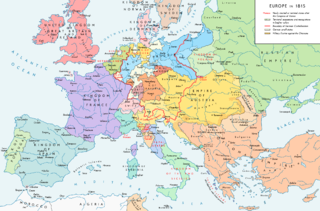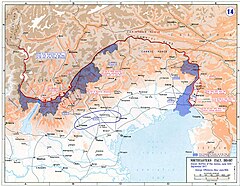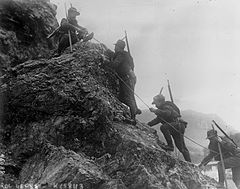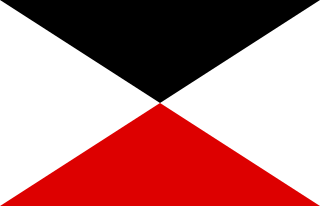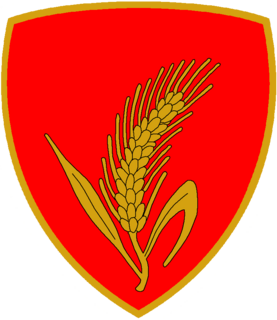First ArmyLieutenant General Roberto Brusati III CorpsLieutenant General Vittorio Camerana - 5th Infantry Division (Lieutenant General Luigi Druetti)
- "Cuneo" Brigade – 7th (I, III & IV [27] ) and 8th (I-III) Infantry Regiments
- "Palermo" Brigade – 67th (I-III) and 68th (I, III & IV) Infantry Regiments
- 27th Field Artillery Regiment (-) (5 batteries) [28] 75/906 [29] (arr. 7–13 June); 10th Co, 2nd Sapper Regiment
- 6th Infantry Division (Lieutenant General Oscar Roffi)
- "Toscana" Brigade – 77th (I-III) and 78th (I-III) Infantry Regiments
- "Sicilia" Brigade – 61st (I-III) and 62nd (I-III) Infantry Regiments
- 16th Field Artillery Regiment (8 batteries) 75/906; 11th Co, 2nd Sapper Regiment
- 35th Infantry Division (Lieutenant General Felice De Chaurand de Sainte Eustache)
- "Milano" Brigade - 159th (I-III) and 160th (I-III) Infantry Regiments
- "Novara" Brigade—153rd I-III) and 154th (I-III) Infantry Regiments
- 42nd Field Artillery Regiment (6 batteries) 75/906; 15th Co, 1st Sapper Regiment; 5th Group of mobile militia cavalry (9th & 10th Squadrons)
- Corps Troops
- 7th Bersaglieri Regiment (Btns 8, 10 & 11 bis)
- 45th Bersaglieri Battalion (mobile militia)
- Mixed Regular & Mobile Militia Alpini battalions: Morbegno (44, 45, 47, 88, 104 Cos); Tirano (46, 48, 49, 89, 113 Cos); Edolo (50-52, 90, 105 Cos) and Vestone (53-55, 91 Cos)
- Territorial Militia Alpini battalions: Val d’Intelvi (244, 245, 247 Cos); Valtellina (246, 248, 249 Cos); Val Camonica (250-52 Cos) and Val Chiese (253-54 Cos)
- III Battalion, Royal Customs Guards (Frontier) (Reale Guardia di Finanza di frontiers)
- 27th Light Cavalry Regiment of Aquila (4 squadrons) [30] (arr. 20 May)
- 6th Field Artillery Regiment (8 batteries) 75/906
- 30th Mountain Battery
- 2nd Group, 1st Heavy Field Artillery Regiment (4th & 5th batteries) [31]
- 1st Battalion, Miners (Cos 10, 11, 18)
- 4th Telegraph Co
- ½ 18th Co, 2nd Sapper Regiment
V Corpssource: [32] Lieutenant General Florenzio Aliprindi - 9th Infantry Division (Lieutenant General Ferruccio Ferri)
- "Roma" Brigade—79th (II, III, IV) and 80th (I-III) Infantry Regiments
- "Pugile" Brigade—71st (II-IV) and 72nd (I-III) Infantry Regiments
- 29th Field Artillery Regiment (8 batteries) 75/906; 12th Co, 1st Sapper Regiment
- 15th Infantry Division (Lieutenant General Luigi Lenchantin) [33]
- "Venezia" Brigade—83rd (I-III) and 84th (I, II, IV) Infantry Regiments
- "Abruzzi" Brigade—57th (I, III, IV) and 58th (I-III) Infantry Regiments
- 19th Field Artillery Regiment (-) (6 batteries) [34] 75/906; 1st Co, 2nd Sapper Regiment
- 34th Infantry Division (Lieutenant General Pasquale Oro)
- "Ivrea" Brigade—161st (I-III) and 162nd (I-III) Infantry Regiments
- "Treviso" Brigade—115th (I-III) and 116th (I-III) Infantry Regiments
- 41st Field Artillery Regiment (6 batteries) 75/906; 9th Co, 2nd Sapper Regiment; Mobile Militia cavalry: 21st Squadron (arr. 11 June) & 23rd Squadron (arr. 29 June)
- Corps Troops
- 2nd Bersaglieri Regiment (Btns 2 bis, 4 & 17)
- 4th Bersaglieri Regiment (Btns 26 bis, 29 & 31 bis)
- 8th Bersaglieri Regiment (Btns 3 bis, 5 & 12)
- 41st, 42nd and 48th Bersaglieri Battalions (mobile militia)
- Mixed Regular & Mobile Militia Alpini battalions: Verona (56-58, 73, 92 Cos); Vincenza (59-61, 93, 108 Cos); Bassano (77-79, 106 Cos) and Feltre (64-66, 95 Cos)
- Territorial Militia Alpini battalions: Val d’Adige (256-258 Cos); Val Leogra (259, 260 Cos); Val Brenta (262, 263 Cos) and Val Cismon (264, 265 Cos)
- V, VII, IX, XVII & XVIII Battalions, Royal Customs Guards (Coastal) (Reale Guardia di Finanza di costieri) with Autonomous Cos. 11 and 52
- I Battalion, Royal Custom Guards (Frontier)
- 22nd Light Cavalry Regiment of Catania (arr. 28 May)
- 15 batteries of mountain artillery: Oneglia Group (batteries 23, 26 & 27); Vincenza Group (batteries 19-21); Genove Group (batteries 28 & 29); Torino Aosta Group (batteries 4-6) and Independent batteries: 1, 8, 57 & 59
- 5th Field Artillery Regiment (8 batteries) 75/911 [35]
- 1st, 13th, 14th & ½ 7th Cos, Miners
- 11th Telegraph Co
- 16th Co, 2nd Sapper Regiment (barrier Brenta-Cismon)
- 16th Co, 1st Sapper Regiment (barrier Agno-Assa)
Army Troops- “Mantova” Brigade [36] —113th (I-III) and 114th Infantry (I-III) Regiments
- 4th Squadron, 27th Light Cavalry Regiment of Aquila [37]
- 3rd Group, 1st Heavy Field Artillery Regiment (6th & 7th batteries)
- 2nd & 17th Cos, Miners
- 17th Co, 2nd Sapper Regiment [38]
- 14th Pontoon Co
- 16th Telegraph Co
- 1 section, radiotelegraph of 1 ½ Kw
- 1 squad, telephotography
Second ArmyLieutenant General Pietro Frugoni II CorpsLieutenant General Enzio Reisoli - 3rd Division (Lieutenant General Giovanni Prelli)
- "Ravenna" Brigade - 37th (I, III, IV) & 38th (I-III) Infantry Regiments
- "Forli Brigade" - 43rd (I-III) & 44th (I, III, IV) Infantry Regiments
- 23rd Field Artillery Regiment (8 batteries) 75/906; 2nd Co, 2nd Sapper Regiment
- 4th Division (Major General Cesare Del Mastro)
- "Livorno" Brigade - 33rd (I-III) & 34th (IV-VI) Infantry Regiments
- "Lombardia" Brigade - 73rd (I-III) & 74th (I-III) Infantry Regiments
- 26th Field Artillery Regiment (8 batteries) 75/906; 3rd Co, 2nd Sapper Regiment
- 32nd Division (Lieutenant General Alberto Piacentini) [39]
- "Spezia" Brigade - 125th (I-III) & 126th (I-III) Infantry Regiments
- "Firenza" Brigade - 127th (I-III) & 128th (I-III) Infantry Regiments
- 48th Field Artillery Regiment (6 batteries) 75/906; 13th Co, 2nd Sapper Regiment
- Corps Troops
- 9th & 10th Bersaglieri Cyclist Battalions
- 11th Field Artillery Regiment (8 batteries) 75/911
- 6th Group, 1st Heavy Field Artillery Regiment (13th & 14th batteries)
- 6th Telegraph Co
IV Corpssource: [40] Lieutenant General Mario Nicolis de Robilant - 7th Division (Lieutenant General Nicola D'Avanzo)
- "Bergamo" Brigade - 25th (I-III) & 26th (II-IV) Infantry Regiments
- "Valtellina" Brigade - 65th (I-III) & 66th (I-III) Infantry Regiments
- 21st Field Artillery Regiment (8 batteries) 75/911; 1st Co, 1st Sapper Regiment
- 8th Division (Lieutenant General Guglielmo Lang)
- "Modena" Brigade - 41st (I-III) & 42nd (I, II, IV) Infantry Regiments [41]
- "Salerno" Brigade - 89th (I, III, IV) & 90th (I-III) Infantry Regiments
- 28th Field Artillery Regiment (8 batteries) 75/906
- 33rd Division (Lieutenant General Carlo Ricci)
- "Liguria" Brigade - 157th (I-III) & 158th (I-III) Infantry Regiments
- "Emilia" Brigade - 119th (I-III) & 120th (I-III) Infantry Regiments
- 40th Field Artillery Regiment (6 batteries) 75/906; 14th Co, 1st Sapper Regiment
- Bersaglieri Division (Lieutenant General Alessandro Raspi)
- 6th Bersaglieri Regiment (Btns 6, 13 & 19)
- 9th Bersaglieri Regiment (Btns 28, 30 & 32)
- 11th Bersaglieri Regiment (Btns 15 bis, 27 & 33)
- 12th Bersaglieri Regiment (Btns 21, 23 & 26)
- Mondavi Group Mountain Artillery (Mt batteries 10, 11, 12, 54); 17th Co, 1st Sapper Regiment
- Alpini Group A (Colonel Riccardo Tedeschi)
- Regular & Mobile Militia Alpini Battalions: Aosta (41-43 Reg Cos, 87, 103 MM Cos); Ivrea (38-40, 86, 111 Cos); Intra (7, 24, 37, 112 Cos) & Cividale (16, 20, 76, 87, 103 Cos)
- Territorial Militia Alpini battalions: Val Natisone (216, 220 Cos); Val Orco (238, 239 Cos); Val Baltea (241, 242 Cos) & Val Toce (207, 243 Cos)
- Bergamo Group Mountain Artillery (Mt batteries 31, 32, 33, 61)
- Alpini Group B (Colonel Ernesto Alliana)
- Regular & Mobile Militia Alpini Battalions: Pinerolo (25-27, 82 Cos); Susa (34-36, 85, 102 Cos); Exilles (31-33, 84 Cos) & Val Pellice (41-43, 87, 103 Cos)
- Territorial Militia Alpini Battalions: Val Cenischia (234, 235 Cos) &Val Dora (231, 232 Cos)
- Pinerola Group Mountain Artillery (Mt batteries 7 & 9)
- Corps Troops
- 5th Bersaglieri Regiment (Btns 14, 22 bis, 24) with 5th Bersaglieri Cyclist Battalion
- 4th Field Artillery Regiment (8 batteries) 75/911
- 4th Group, 1st Heavy Field Artillery Regiment (batteries 8, 9 & 10)
- 17th Telegraph Co
XII Corpssource: [42] Lieutenant General Luigi Segato - 23rd Division (Lieutenant General Giovanni Airaldi)
- "Verona" Brigade - 85th (I-III) & 86th (I, III, IV; 9 cos only) Infantry Regiments
- "Aosta" Brigade - 5th Infantry Regiment (II-IV; 9 cos only) &6th (I, III, IV) Infantry Regiments
- 22nd Field Artillery Regiment (8 batteries) 75/906
- 1st Group, 10th Field Artillery Regiment (batteries 1, 2 & 3)
- 12th Co, 2nd Sapper Regiment
- 24th Division (Major General Gustavo Fara)
- "Napoli" Brigade - 75th (I, II, IV; 9 cos only) &76th (I-III) Infantry Regiments
- "Piemonte" Brigade - 3rd (II, III, IV; 9 cos only) & 4th (I, II, IV) Infantry Regiments
- 36th Field Artillery Regiment (2 groups w 5 field batteries) 75/911 plus 3 (sic 6? [43] ) mt. batteries: 13th Mt Group (Mt batteries 37-39) & 14th Mt. Group (Mt batteries 63, 64 & 65)
- 3rd Group, 10th Field Artillery Regiment (batteries 6, 7 & 8); 4th Co, 2nd Sapper Regiment
- Corps Troops
- 10th bis Bersaglieri Regiment (Btns 16 bis, 34 bis & 35 bis)
- 2nd Group, 10th Field Artillery Regiment (batteries 4 & 5) [44]
- 4th Group, 2d Heavy Field Artillery Regiment (batteries 8, 9 & 10)
- 9th Telegraph Co
Army Troops- 2 groups of 2 batteries of 149 A cannon [45] (149 A batteries 1, 7, 11 & 12) (for the “first bound forward”)
- 1 group of 3 batteries of 149 G cannon [46] (149 G batteries 5, 6 & 7) (for the “first bound forward”)
- 2 groups of 4 batteries of pack 70 A cannon. [47] (pack batteries 1, 4, 5, 8, 9, 10, 11 & 20)
- 1 Pontoon battalion (Cos 6, 7, 8, 13)
- 8th Co, Miners
- 24th Telegraph Co
- 1 section radiotelegraph of 1 ½ Kw
- 1 squad field photography
- 3 sections of field aerostatic balloons
- 3 squadrons of aeroplanes (Nos 6th, 7th & 8th Newport)
Third Armysource: [48] His Royal Highness, Prince Emanuele Filiberto, Duke of Aosta [49] VI Corpssource: [50] Lieutenant General Carlo Ruelle - 11th Division (Lieutenant General Ettore Mambretti)
- "Pistoia" Brigade - 35th (I, III, IV) & 36th (I-III) Infantry Regiments
- The King's ("Re") Brigade - 1st (I-III) & 2nd (I-III) Infantry Regiments
- 14th Field Artillery Regiment (8 batteries) 75/906 (3 batteries arr. 27 May)
- 1 group of 3 batteries of 70 A. pack (pack batteries 2, 7 & 14)
- 1st Group, 1st Heavy Artillery Regiment (byts 1, 2 & 3)
- 6th Co, 2nd Sapper Regiment
- 12th Division (Major General Oreste Zavattari)
- "Casale" Brigade - 11th (I-III) & 12th (I-III) Infantry Regiments
- "Pavia" Brigade - 27th (I-III) & 28th (I-III) Infantry Regiments
- 30th Field Artillery Regiment (8 batteries) 75/906; 7th Co, 2nd Sapper Regiment
- 1st Cavalry Division (Lieutenant General Nicola Pirozzi)
- 1st Cavalry Brigade - 13th Light Cavalry Regiment of Monferrato (-) (4 squadrons) [51] (arr. 10 May) & 20th Light Cavalry Regiment of Rome (arr. 10 May)
- 2nd Cavalry Brigade - 4th Cavalry Regiment of Genova (arr. 10 May) & 5th Lancer Regiment of Novara (arr. 12 May)
- 94th Infantry Regiment [from Messina Brigade, 13th Division, VII Corps]
- 1 battalion of 20th Infantry Regiment
- 8th & 11th Bersagliari Cyclist Battalions
- 2nd Group of Horse Artillery (Horse Artillery batteries 1 & 2) 75/912 [52]
- 2nd Group, 3rd Field Artillery Regiment (batteries 4 & 5)
- Corps Troops
- 6th & 12th Bersaglieri Cyclist Battalions
- II Battalion, Royal Customs Corps (Frontier)
- 3rd Field Artillery Regiment (-) (6 batteries) [53] 75/911
- 2nd Group, 2nd Heavy Field Artillery Regiment (4th & 5th batteries)
- 8th Telegraph Co
- ½ 18th Co, 2nd Sapper Regiment
- 19th Co, Miners
- 12th Pontoon Co
- 1st & 2nd Squadrons aeroplanes Bleriot
VII Corpssource: [54] Lieutenant General Vincenzo Garioni - 13th Division (Lieutenant General Cleto Angelotti)
- "Messina" Brigade - 93rd (III, IV, V; 9 cos only); [94th Infantry Regiment (II-IV) [55] ]
- Sardinia Grenadiers - 1st (I, II, IV) [56] & 2nd (I-III) Grenadier Regiments
- 31st Field Artillery Regiment (8 batteries) (not arrived by May 24)
- 1 battery of 70 A. pack (pack battery 12)
- 2nd Co, 1st Sapper Regiment
- 14th Division (Major General Giacinto Rostagno)
- "Pinerolo" Brigade - 13th (I-III) [57] & 14th (I, II, IV) [58] Infantry Regiments
- "Acqui" Brigade - 17th (I, III, IV) & 18th (I-III) Infantry Regiments
- 18th Field Artillery Regiment (8 batteries) 75/906 (arr. 28 May); 7th Co, 1st Sapper Regiment
- Corps Troops
- 2nd Field Artillery Regiment (8 batteries) 75/911 (not arrived by May 24)
- 13th Telegraph Co (not arrived by May 24)
XI Corpssource: [59] Lieutenant General Giorgio Cigliana - 21st Division (Lieutenant General Carlo Mazzoli)
- The Queen's ("Regina") Brigade (not arrived by May 24) - 9th Infantry Regiment (I-III) [60]
- "Pisa" Brigade (not arrived by May 24) - 29th (II-IV; 9 cos only) & 30th (I, III, IV) Infantry Regiments
- 35th Field Artillery Regiment (8 batteries) 75/911 (arr. 28–30 May); 4th Co, 1st Sapper Regiment (not arrived by May 24)
- 22nd Division (Lieutenant General Vittorio Signorile)
- "Brescia" Brigade (not arrived by May 24) - 19th (I, II, IV; 9 cos only) & 20th (I-III) Infantry Regiments
- "Ferrara" Brigade (not arrived by May 24) - 47th (II, III, IV; 9 cos only) & 48th (I, II, IV) Infantry Regiments
- 15th Field Artillery Regiment (8 batteries) 75/911 (arr. 28 May); 3rd Co, 1st Sapper Regiment (not arrived by May 24)
- 2nd Cavalry Division (or Detachment of San Giorgio di Nogaro) (Lieutenant General Giovanni Vercellana)
- HQ of the Queen's Brigade
- 3rd Cavalry Brigade - 7th Lancer Regiment of Milano (arr. 16 May) & 10th Lancer Regiment of Victor Emanuel II (arr. 21 May)
- 4th Cavalry Brigade - 6th Lancer Regiment of Aosta (arr. 9 June) & 25th Lancer Regiment of Mantova (arr. 30 May)
- 3rd & 7th Bersagliari Cyclist Battalions
- 10th Infantry Regiment (I-III) [61]
- 1 battalion of 14th Infantry Regiment
- 1 battalion of 1st Grenadiers
- 1st Group of Horse Artillery (Horse Artillery batteries 1 & 2) 75/912
- 3rd Group, 2nd Heavy Field Artillery Regiment (batteries 6 & 7)
- 2 pack batteries (pack batteries 16 & 17)
- Corps Troops
- 9th Field Artillery Regiment (8 batteries) 75/911 (arr. 30 May)
- 5th Pontoon Co (not arrived by May 24)
- 10th Telegraph Co (not arrived by May 24)
Army Troops- X, XI, XII, XIII, XIV, XV Battalions, Royal Customs Guards (Coastal)
- 1st Group, 2nd Heavy Field Artillery Regiment (1, 2 & 3 batteries)
- 1 group of 4 batteries of 149 G cannon (149 G batteries 1-4)
- 1 battery of pack cannon of 70 A. (pack battery 19)
- 5th Co, Miners
- 21st Telegraph Co
- 4th, 10th & 11th Pontoon Cos
- 1 section radiotelegraph
- 1 squad field photography
- 3 sections of field aerostatic balloons
- 5 squadrons of aeroplanes (Nos 1st, 2nd, 3rd, 13th & 14th Bleriot)
| Fourth Armysource: [62] Lieutenant General Luigi Nava I CorpsLieutenant General Ottavio Ragni - 1st Division (Lieutenant General Alfonso Pettiti di Roreto)
- "Parma" Brigade - 49th (I-III) &50th (I, IV & V; 9 cos only) Infantry Regiments
- "Basilicata" Brigade - 91st (I-III) & 92nd (I-III) Infantry Regiments
- 25th Field Artillery Regiment (-) (5 batteries) [63] 75/906 (arr. 1 June)
- 2 batteries of 70 A. pack (pack batteries 6 & 13) (arr. 20 June)
- 5th Co, 2nd Sapper Regiment
- 2nd Division (Lieutenant General Saverio Nasalli Rocca)
- "Como" Brigade - 23rd (I, IV & V; 9 cos only) & 24th (I-III) Infantry Regiments
- "Umbria" Brigade - 53rd (I-III) & 54th (I-III) Infantry Regiments
- 17th Field Artillery Regiment (8 batteries) 75/906
- 10th Division (Lieutenant General Giovanni Scrivante)
- "Marche" Brigade - 55th (I-III) & 56th (I-III) Infantry Regiments
- "Ancona" Brigade - 69th (I-III) & 70th (I-III) Infantry Regiments
- 20th Field Artillery Regiment (8 batteries) 75/906; 11th Co, 1st Sapper Regiment; 14th Co, 2nd Sapper Regiment
- Corps Troops
- 21st Light Cavalry Regiment of Padova (arr. 30 May)
- 8th Field Artillery Regiment (8 batteries) 75/906
- ½ 7th & 21st Cos, Miners
- 12th Telegraph Co
IX CorpsLieutenant General Pietro Marini - 17th Division (Lieutenant General Diomede Saveri)
- "Reggio" Brigade - 45th (I-III) & 46th (I-III) Infantry Regiments
- "Torino" Brigade - 81st (I-III) & 82nd (IV-VI; 9 cos only) Infantry Regiments
- 13th Field Artillery Regiment (8 batteries) 75/911 (arr. 31 May); 5th Co, 1st Sapper Regiment
- 18th Division (Lieutenant General Vittorio Carpi)
- "Alpi" Brigade - 51st (I-III) & 52nd (II-IV) Infantry Regiments
- "Calabria" Brigade - 59th (I-III) & 60th (II-IV) Infantry Regiments
- 33rd Field Artillery Regiment (8 batteries) 75/911; 8th Co, 1st Sapper Regiment
- Additional Organic
- Mixed Regular & Mobile Militia Alpini Battalions - Fenestrelle (28, 29, 30, 83 Cos); Pieve di Cadore (67, 68, 75, 96 Cos) & Belluno (77-79, 106 Cos)
- Territorial Militia Alpini Battalions - Val Chisone (228-230 Cos); Val Piave (267 & 268 Cos) & Val Cordevole (206 & 266 Cos)
- Torino-Susa Group of Mt. Artillery (Mt batteries 2 & 3)
- Belluno Group of Mt. Artillery (Mt batteries 22, 23, 24, & 58)
- Como Group of Mt. Artillery (Mt batteries 34, 35 & 36)
- Corps Troops
- 3rd Bersaglieri Regiment (Btns 18, 20 & 25)
- 9th Lancer Regiment of Firenza (arr. 5 June)
- 1st Field Artillery Regiment (8 batteries) 75/911 (2 batteries arr. 26 May)
- 5th Telegraph Co
Army Troops- XVI Battalion, Royal Custom Guards (Frontier)
- 1 regiment of mobile territorial infantry (3 btns)
- 5th & 6th Groups, 2nd Heavy Field Artillery Regiment (batteries 11, 12, 13 & 14)
- 1 battalion of Miners (12, 16, 20 & 21 Cos)
- 22nd Telegraph Co
- 1st Pontoon Co
- 1 section radiotelegraph
- 1 squad telephotography
Carnia Zonesource: [64] Lieutenant General Clemente Lequio - 8 Mixed Regular & Mobile Militia Alpini battalions: Mondovi (9-11, 114 Cos); Pieve di Teco (2, 3, 8, 107, 115 Cos); Ceva (1, 4 & 5, 98, 116 Cos); Borgo San Dalmazzo (13-15, 99, 117 Cos); Dronero (17-19, 81, 101 Cos); Saluzzo (21-23, 80, 100 Cos); Tolmezzo (6, 12, 72, 109 Cos) & Gemona (69-71, 97 Cos)
- 8 Territorial Militia Alpini battalions: Val d’Eilero (209, 210 cos); Val d’ Arroscia (202, 203, 208 Cos); Val Tanaro (201, 204 cos); Valle Stura (213-215 cos); Val Maira (217-219 cos); Val Varaita (221-223 cos); Val Tagliamento (212 & 272 cos) & Val Fella (269 & 270 cos)
- VIII, XIX & XX Battalions, Royal Customs Guards (Coastal)
- 1 squadron, 13th Light Cavalry Regiment of Monferrato
- 6 batteries of mountain artillery: Mt batteries 13, 14, 15 & 55 (Conegliano Group); Mt battery 51 (Torino-Susa Group) & Mt battery 52 (Torino-Aosta Group)
- 2 batteries of 70 A. pack (pack batteries 3 & 15)
- 4th & 6th Cos, Miners
- 6th & 21st Cos 1st Sapper Regiment
- 19th Telegraph Co
High Command Troopssource: [65] VIII Corpssource: [66] Lieutenant General Ottavio Briccola - 16th Division (Major General Luciano Secco)
- "Friuli" Brigade - 87th (I bis, II bis, III bis; 9 cos only) & 88th (I-III) Infantry Regiments
- "Cremona" Brigade - 21st (I-III) & 22nd (I, III, IV) Infantry Regiments
- 32nd Field Artillery Regiment (8 batteries) 75/906 (arr. 29 May); 8th Co, 2nd Sapper Regiment
- 29th Division (Lieutenant General Fortunato Marazzi) [67]
- "Perugia" Brigade - 129th (I-III) & 130th (I-III) Infantry Regiments
- "Lazio" Brigade - 131st (I-III) & 132nd (I-III) Infantry Regiments
- 37th Field Artillery Regiment (6 batteries) 75/906 (arr. 31 May); Special Co, 2nd Sapper Regiment
- Corps Troops
- 23rd Light Cavalry Regiment of Umberto I
- 7th Field Artillery Regiment (8 batteries) (arr. Early June) 75/911
- 14th Telegraph Co
X Corpssource: [68] Lieutenant General Domenico Grandi - 19th Division (Lieutenant General Giuseppe Ciancio)
- "Siena" Brigade - 31st (I, III, IV) & 32nd (I-III) Infantry Regiments
- "Palermo" Brigade - 39th (I-III) & 40th (I, II, IV) Infantry Regiments
- 24th Field Artillery Regiment (8 batteries) 75/906 (arr. 5–9 June)
- 9th Co, 1st Sapper Regiment
- 20th Division (Lieutenant General Eduardo Coardi di Carpenetto)
- "Savona" Brigade - 15th (I-III) & 16th (II bis, IV & V; only 9 cos) Infantry Regiments
- "Cagliari" Brigade - 63rd (I, II & IV) & 64th (I-III) Infantry Regiments
- 34th Field Artillery Regiment (8 batteries) 75/906 (arr. 5–6 June); 10th Co, 1st Sapper Regiment
- Corps Troops
- 12th Field Artillery Regiment (8 batteries) 75/911 (arr. 6–9 June)
- 15th Telegraph Co
XIII Corpssource: [69] Lieutenant General Gaetano Zoppi - 25th Division (Major General Luigi Capello) [70]
- "Macerata" Brigade - 121st (I-III) & 122nd (I-III) Infantry Regiments
- "Sassari" Brigade - 151st (I-III) & 152nd (I-III) Infantry Regiments
- 46th Field Artillery Regiment (8 batteries) 75/906; 15th Co, 2nd Sapper Regiment
- 30th Division (Lieutenant General Arcangelo Scotti) [71]
- "Piacenza" Brigade - 159th (I-III) & 160th (I-III) Infantry Regiments
- "Alessandria" Brigade - 155th (I-III) & 156th (I-III) Infantry Regiments
- 39th Field Artillery Regiment (6 batteries) 75/906 (arr. 13 June); 18th Co, 1st Sapper Regiment
- 31st Division (Lieutenant General Annibale Gastaldello) [72]
- "Chieti" Brigade - 123rd (I-III) & 124th (I-III) Infantry Regiments
- "Barletta" Brigade - 137th (I-III) & 138th (I-III) Infantry Regiments
- 43rd Field Artillery Regiment (6 batteries) 75/906 (arr. 2 June)
- 25th Field Artillery Regiment (3 batteries) 75/906 (arr. 1 June)
- 13th Co, 1st Sapper Regiment
- Corps Troops
- 49th, 50th & 52nd Bersaglieri Battalions (mobile militia)
- 44th Field Artillery Regiment (6 batteries) 75/906 (arr. 8–9 June)
- 5th Pontoon Co
- 18th Telegraph Co
XIV Corpssource: [73] Lieutenant General Paolo Morrone - 26th Division (Major General Michele Salazar)
- "Caltanissetta" Brigade - 147th (I-III) & 148th (I-III) Infantry Regiments
- "Catania" Brigade - 145th (I-III) & 146th (I-III) Infantry Regiments
- 49th Field Artillery Regiment (5 batteries) 75/906 (arr. 12 June)
- 6th Squadron, 16th Light Cavalry Regiment of Lucca
- 19th Co, 2nd Sapper Regiment
- 27th Division (Lieutenant General Guglielmo Pecori Giraldi)
- "Benevento" Brigade - 133rd (I-III) & 134th (I-III) Infantry Regiments
- "Campagnia" Brigade - 135th (I-III) & 136th (I-III) Infantry Regiments
- 38th Field Artillery Regiment (6 batteries) 75/906 (arr. 8 June); 20th Co, 2nd Sapper Regiment
- 28th Division (Lieutenant General Giuseppe Queirolo) [74]
- "Bari" Brigade - 139th (I-III) & 140th (I-III) Infantry Regiments
- "Catanzaro" Brigade - 141st (I-III) & 142nd (I-III) Infantry Regiments
- 45th Field Artillery Regiment (6 batteries) 75/906 (arr. 9–12 June); 21st Co, 2nd Sapper Regiment
- Corps Troops
- 56th Bersaglieri Battalion (mobile militia)
- 47th Field Artillery Regiment (5 batteries) plus 3 batteries of 27th & 2 batteries of 19th Field Artillery Regiments; all 75/906
- 30th Mountain Battery
- 2nd & 9th Pontoon Cos
- 23rd Telegraph Co
3rd Cavalry DivisionLieutenant General Carlo Guicciardi di Cervarolo - 5th Cavalry Brigade - 12th Light Cavalry Regiment of Saluzzo (arr. 7 June) & 24th Light Cavalry Regiment of Vincinza (arr. 20 May)
- 6th Cavalry Brigade - 3rd Cavalry Regiment Savoia (arr 6 June) & 8th Lancer Regiment of Montebello (arr. 3 June)
- 3rd Group Horse Artillery (Horse Artillery batteries 5 & 6) 75/912 (29 May at Ponte di Piave)
4th Cavalry Divisionsource: [75] Lieutenant General Alessandro Malingri di Bagnolo - 4th Cavalry Brigade - 1st Cavalry Regiment Nizza (arr. 5 June) & 26th Lancer Regiment of Vercelli (arr. 5 June)
- 8th Cavalry Brigade - 19th Light Cavalry Regiment Guide (Squadron Nos 1, 3, 4, 5 & 6) [76] (arr. 8 June) & 28th Light Cavalry Regiment of Treviso (arr. 7 June)
- 4th Group Horse Artillery (Horse Artillery batteries 7 & 8) 75/912 (left Milano June 4 for Portogruaro)
Misc.- "Padova" Brigade [77] - 117th (I-III) & 118th (I-III) Infantry Regiments
- "Trappani" Brigade [78] - 144th Infantry Regiment (I, II, III; 9 cos only) & 149th Infantry Regiment [79]
- Royal Carabinieri Regiment of 3 battalions (9 cos)
- 19th Co, 1st Sapper Regiment [77]
- 1st [77] & 7th Telegraph Cos
- 15th Co, Miners [77]
- 15th Pontoon Co [77]
- Dirigibles P4, [77] P5, M1
- 4 squadrons aeroplanes (Nos. 4th Bleriot, [77] 5th Newport, 9th & 10th H. Farman)
|





